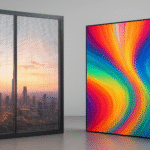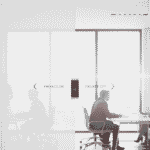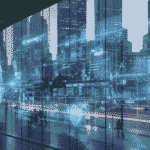A Flexible Transparent LED screen is revolutionizing the way we view and interact with digital content. These cutting-edge displays offer unparalleled versatility and have become increasingly popular in various industries. Whether it’s for advertising, entertainment, or consumer electronics, flexible transparent LED screens are reshaping the landscape of digital displays. In this article, you will explore the pros, cons, and applications of Flexible Transparent LED Screens.
Understanding Flexible Transparent LED Screens
These are display devices that use light-emitting diodes (LEDs) mounted on flexible, transparent substrates. Unlike traditional rigid LED screens, these displays can bend, curve, and conform to different shapes and surfaces, providing more dynamic and creative applications while maintaining transparency.
How They Differ from Traditional LED Screens
The main difference lies in their flexibility and transparency. Traditional LED screens are typically rigid and opaque, limiting their installation and usage options. A Flexible Transparent LED screen, however, can be wrapped around columns, curved along walls, or even rolled up for easy transport, making them ideal for innovative display solutions while allowing light to pass through.
Pros of Flexible Transparent LED Screens
Let’s explore the Pros of Flexible Transparent LED Screens:
Versatility in Design
They offer significant pros in design versatility. Manufacturers can customize them to fit a variety of shapes and sizes, enabling unique installations that traditional screens cannot accommodate.
Enhanced Durability
They are often more durable than their rigid counterparts. They can withstand bending and flexing, reducing the risk of damage during installation and use. This durability makes them suitable for both indoor and outdoor applications.
Energy Efficiency
LED technology is known for its energy efficiency, and flexible transparent displays are no exception. They consume less power compared to traditional displays, which can lead to significant cost savings, especially in large-scale installations.
Lightweight and Portable
These screens are typically lighter and more portable than rigid LED screens. This makes them easier to transport and install, reducing labor costs and installation time.
Transparency
The transparent nature of these screens allows them to blend seamlessly into any environment without obstructing the view, making them ideal for applications where maintaining visibility is crucial.
Cons of Flexible Transparent LED Screens
Let’s explore the cons of Flexible Transparent LED Screens:
Cost Considerations
One of the main drawbacks of these screens is their cost. The advanced materials and manufacturing processes required to produce these screens can make them more expensive than traditional LED displays.
Technical Limitations
While flexible transparent LEDs offer many benefits, they also come with some technical limitations. For example, achieving high resolution and brightness on a flexible, transparent substrate can be challenging, and the screens may not always match the performance of their rigid counterparts in these areas.
Maintenance and Repair Challenges
Maintaining and repairing LED screens is more complex than maintaining traditional screens. The flexible and transparent nature of the display means that any damage or malfunction might require specialized repair techniques and tools.
Applications of Flexible Transparent LED Screens
Explore the diverse applications of flexible transparent LED screens across industries, leveraging their unique properties to enhance visual experiences and communication:
Advertising and Marketing
Revolutionize advertising and marketing by offering dynamic, eye-catching displays that attract attention and engage audiences effectively. They are used in:
- Dynamic Billboards: Create vibrant visuals in high-traffic areas for maximum exposure.
- Digital Signage: Enhance brand visibility and influence purchasing decisions in retail.
- Event Sponsorships: Provide versatile branding opportunities at events and exhibitions.
Entertainment and Events
Play a crucial role in enhancing entertainment experiences and event productions, providing immersive visuals and enhancing audience engagement. They are utilized in:
- Concerts and Festivals: Enhance stage visuals and audience engagement.
- Theatrical Productions: Transform set designs with dynamic backgrounds.
- Sports Arenas: Display real-time updates and promotional content to enrich spectator experiences.
Consumer Electronics
Reshape consumer electronics, offering innovative display solutions in portable devices and enhancing user interactions. They are applied in:
- Smartphones and Tablets: Enable foldable designs and enhance user interaction.
- Wearable Devices: Optimize display space and provide seamless information updates.
- Gaming Devices: Deliver immersive gaming experiences with vibrant displays.
Automotive Industry
Transform vehicle interiors and exteriors, providing aesthetic appeal and functional benefits. They are used for:
- Dashboard Displays: Customize layouts and enhance driver interaction.
- Exterior Lighting: Illuminate logos and enhance vehicle aesthetics.
- Interactive Interfaces: Integrate for enhanced navigation and in-vehicle entertainment.
Architecture and Interior Design
Transform spaces, integrating dynamic visuals and functional displays into building designs. They are applied in:
- Building Facades: Display artworks and animations for public art installations.
- Interior Decor: Create immersive environments with dynamic lighting and interactive features.
- Event Spaces: Enhance presentations and create memorable experiences with versatile display configurations.
Retail Environments
Create engaging shopping experiences and promote products effectively. They are utilized for:
- Storefront Displays: Attract customers with dynamic visuals and promotional content.
- Interactive Experiences: Engage customers with multimedia demonstrations and product showcases.
- Pop-up Stores: Establish brand identity and enhance visibility with impactful visual displays.
Educational and Museums
Enrich learning experiences and enhance exhibits with multimedia presentations. They are used for:
- Interactive Learning: Engage students with educational content and virtual tours.
- Exhibit Enhancements: Present historical narratives and cultural artifacts in compelling visual formats.
Flexible transparent LED screens continue to redefine digital communication and interactive experiences across various sectors, offering versatility and impact in modern applications.
Factors Affecting the Price of a Flexible Transparent LED Screen
Let’s analyze key Factors affecting the Price of a Flexible Transparent LED Screen:
Quality of Flexible LED Modules
The quality of a flexible transparent screen is crucial for ensuring the display effect and service life. High-quality modules typically come at a higher cost but offer better performance and durability.
Hardware Equipment Costs
Flexible screens require high-quality components, including LED beads, light boards, drivers, and controllers. These components need to be finely tuned and matched, which can increase the overall cost of the display.
Transport Packaging
The transportation and packaging of flexible screens add to the overall cost. Proper packaging ensures the displays are protected during transit, preventing damage and maintaining quality.
Display Materials
The materials used in the construction of flexible screens, such as polyurethane, polyester, and PEN, impact both the cost and quality of the final product. Different materials offer varying levels of flexibility, durability, and performance.
Conclusion
Flexible transparent LED screens are a game-changer in the world of digital displays. Their versatility, durability, and energy efficiency make them an attractive option for various industries. While there are some challenges to overcome, the potential benefits and applications of flexible transparent LED screens are vast. As technology continues to advance, we can expect to see even more innovative uses for these remarkable displays.
FAQs
Are flexible transparent LED screens waterproof?
Many are waterproof and weather-resistant, making them suitable for outdoor use. However, it is important to check the specific product specifications for details.
How long do flexible transparent LED screens last?
They can have varying lifespans, typically ranging from 50,000 to 100,000 hours, depending on the quality of components and usage conditions.
Can you repair flexible transparent LED screens if damaged?
Yes, you can repair them, but the process can be more complex than with traditional displays. It often requires specialized tools and expertise.
What is the maximum size of a flexible transparent LED screen?
The maximum size of a flexible transparent LED screen depends on the manufacturer and the specific product. Some manufacturers can produce large displays that cover entire building facades.





